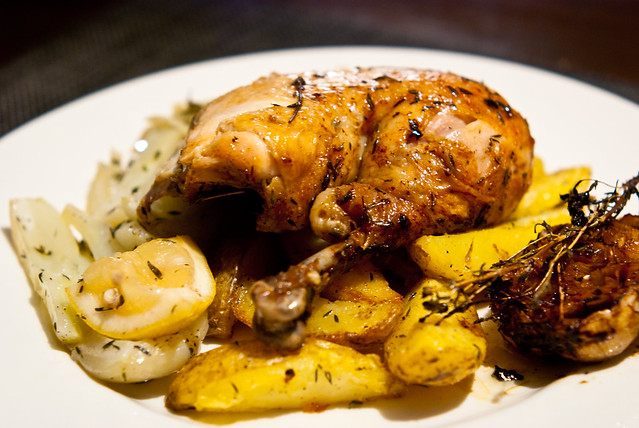African food recipe

Pintade is a traditional Senegalese French kitchen recipe of grilled guinea fowl also known as Guinea Hens. The flavor of guinea fowl is between pheasant and chicken, a little gamey but not over the top. The guinea fowl is a wild bird found living across the African continent used in many popular African recipes. Guinea fowl is the food of choice for holiday meals.
Explore More Senegalese Food & Culture
Pintade Guinea Fowl Recipe
Serves 4African food
Pintade French Guinea Fowl Recipe
Ingredients1 guinea fowl about 3 1/2 lb. or 2 guinea fowl 2 pounds each, cut into serving pieces
2 large onions, diced
3 tablespoons all-purpose flour
1 whole bay leaf
½ teaspoon dried thyme
4 sprigs fresh parsley
1/2 teaspoon fresh rosemary
5 cloves of garlic, peeled
1 teaspoon lemon juice
3 cups vegetable broth
Salt and black pepper to taste
2 tablespoons vegetable oil
Directions
Season cut-up guinea fowl with salt and pepper. Heat the oil in a heavy skillet large enough to hold the pieces in one layer. Add the hen pieces skin side down and cook, turning the pieces often, until browned all over. Remove fowl, add the onions and spices, and stir. Cook about two minutes. Sprinkle onion mix with flour and stir so that the ingredients cook evenly. Add the broth, cover and cook about 20 minutes. Uncover and let cook about 10 minutes longer. Serve your guinea fowl in the casserole dish of your choice, with sides such as rice, potatoes or vegetables.
More economical easy breakfast, lunch and dinner recipes to make right now so you never have to eat or prepare a boring meal again.
- Curried Tanzanian Coconut Okra Recipe
- Frikkadelle an Afrikaner dish of meatballs
- Senegalese Chicken Vermicelli
- Chadian Steamed Honey Cassava Buns
- Cameroon Smoked Bonga Fish Stew



























